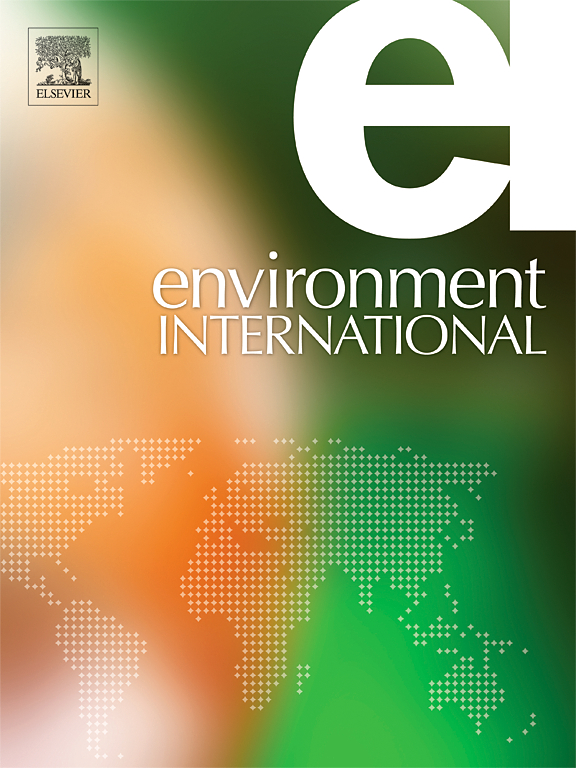The impact of particle size and volatile organics on the light absorption of wildfire-like brown carbon emissions from wood combustion
IF 9.7
1区 环境科学与生态学
Q1 ENVIRONMENTAL SCIENCES
引用次数: 0
Abstract
Here, the light absorption of brown carbon (BrC) emitted by wood combustion and denuded from volatile organic carbon (VOC) at 300 °C is elucidated using a recently developed thermal decomposition platform coupled with a suite of real-time aerosol instrumentation and time-integrated sampling systems. The BrC particle size distribution, morphology and optical properties are closely controlled by increasing the combusted wood mass from 50 to 600 mg to emulate those measured for “real world” wildfire particulate matter (PM) emissions. Size-fractionation of such wildfire-like BrC reveals that the PM0.1–2.5 fraction contains high molecular weight, carcinogenic polycyclic aromatic hydrocarbons (PAHs) and absorbs up to five times more light compared to the PM0.1 fraction. Thus, increasing the combusted wood mass from 50 to 600 mg increases the PM0.1–2.5 concentration by a factor of about eight and enhances the overall BrC mass absorption cross-section, MAC, up to a factor of two at a wavelength of 405 nm. Condensation of VOC on BrC reduces its MAC up to 40 %. Still, the particle size seems to largely determine the BrC light absorption, as large VOC-rich particles absorb more light compared to small VOC-lean ones. The size-resolved BrC MAC measured here can be interfaced with climate models to estimate the climate impact of wildfire PM emissions.


颗粒大小和挥发性有机物对木材燃烧产生的类似野火的棕色碳排放光吸收的影响
在这里,利用最近开发的热分解平台以及一套实时气溶胶仪器和时间集成采样系统,阐明了300 °C下木材燃烧释放的棕色碳(BrC)的光吸收,并从挥发性有机碳(VOC)中剥离。通过将燃烧木材质量从50增加到600 mg来模拟“真实世界”野火颗粒物(PM)排放,可以密切控制BrC粒径分布、形态和光学性质。这种野火样的BrC的尺寸分馏表明,PM0.1 - 2.5馏分含有高分子量的致癌多环芳烃(PAHs),与PM0.1馏分相比,吸收的光最多可达5倍。因此,将燃烧木材质量从50 mg增加到600 mg,可使PM0.1-2.5浓度增加约8倍,并在波长405 nm处使整体BrC质量吸收截面MAC增加2倍。挥发性有机碳(VOC)在BrC上的冷凝可使其MAC降低40% %。尽管如此,颗粒大小似乎在很大程度上决定了BrC的光吸收,因为富含voc的大颗粒比少voc的小颗粒吸收更多的光。这里测量的大小分辨的BrC MAC可以与气候模型相结合,以估计野火PM排放的气候影响。
本文章由计算机程序翻译,如有差异,请以英文原文为准。
求助全文
约1分钟内获得全文
求助全文
来源期刊

Environment International
环境科学-环境科学
CiteScore
21.90
自引率
3.40%
发文量
734
审稿时长
2.8 months
期刊介绍:
Environmental Health publishes manuscripts focusing on critical aspects of environmental and occupational medicine, including studies in toxicology and epidemiology, to illuminate the human health implications of exposure to environmental hazards. The journal adopts an open-access model and practices open peer review.
It caters to scientists and practitioners across all environmental science domains, directly or indirectly impacting human health and well-being. With a commitment to enhancing the prevention of environmentally-related health risks, Environmental Health serves as a public health journal for the community and scientists engaged in matters of public health significance concerning the environment.
 求助内容:
求助内容: 应助结果提醒方式:
应助结果提醒方式:


